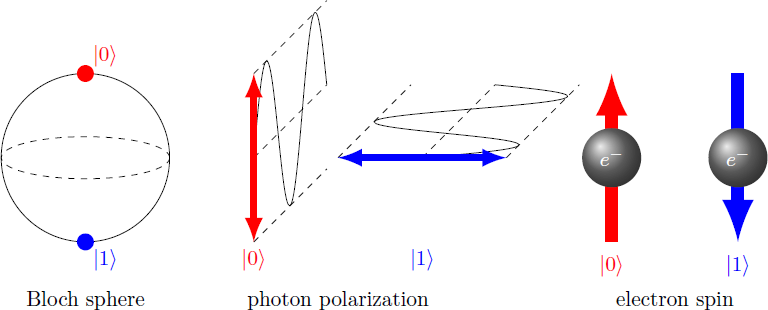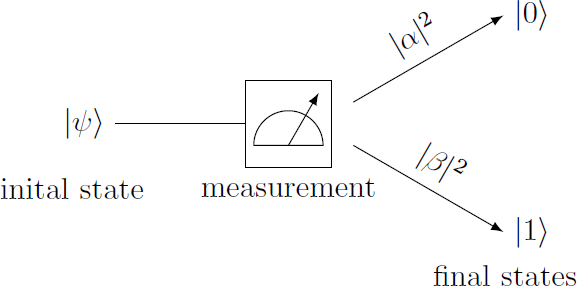Quantum Computing 1 -- The qubit

The qubit is the smallest storage unit in the quantum computer and represents the simplest nontrivial quantum system. The qubit can assume one of two distinguishable states. These eigenstates of the qubit are denoted by and and correspond to the two setting possibilities of a classical bit. They can also be represented as two-dimensional unit vectors In contrast to the classical bit, the qubit can also assume a superposition of the states and . The general state of the qubit is therefore a linear combination of the two eigenstates The vectors and thus form a basis of the vector space. The state is characterized by the two complex numbers and .

If the qubit is in such a superposition and you take a measurement, you get a random result. The probability of finding the qubit in the state or is proportional to the absolute square or of the respective pre-factor. After the measurement, the qubit is in one of the eigenstates or , so that the information about the original state is lost (wave function collapse)
Usually, state vectors will be normalized (i.e. ), so the probabilities for the states and are given directly by absolute squares and . In addition, a phase factor can be chosen freely, so that the qubit can be described by two real numbers and : If one interprets these numbers and as angles, the qubit can be represented as a point on a sphere surface (Bloch sphere).
A qubit in the normalized state is measured. What are the probabilities of the two different outcomes and ?
Conclusion: The state of a qubit is described by a two-dimensional vector, so that a qubit contains much more information than a classical bit. However, if the qubit is read out, most information is deleted, so that the result is only one of the two states or . The readable part of the quantum information therefore only corresponds to one classical bit. However, the full quantum information be can used for quantum operations, as we will see later.
Easy Math Editor
This discussion board is a place to discuss our Daily Challenges and the math and science related to those challenges. Explanations are more than just a solution — they should explain the steps and thinking strategies that you used to obtain the solution. Comments should further the discussion of math and science.
When posting on Brilliant:
*italics*or_italics_**bold**or__bold__paragraph 1
paragraph 2
[example link](https://brilliant.org)> This is a quote# I indented these lines # 4 spaces, and now they show # up as a code block. print "hello world"\(...\)or\[...\]to ensure proper formatting.2 \times 32^{34}a_{i-1}\frac{2}{3}\sqrt{2}\sum_{i=1}^3\sin \theta\boxed{123}Comments
I hope to see more additions to the series :)
Log in to reply
After almost two weeks break there is non a sequel to this series with a new chapter. I hope you like it :D